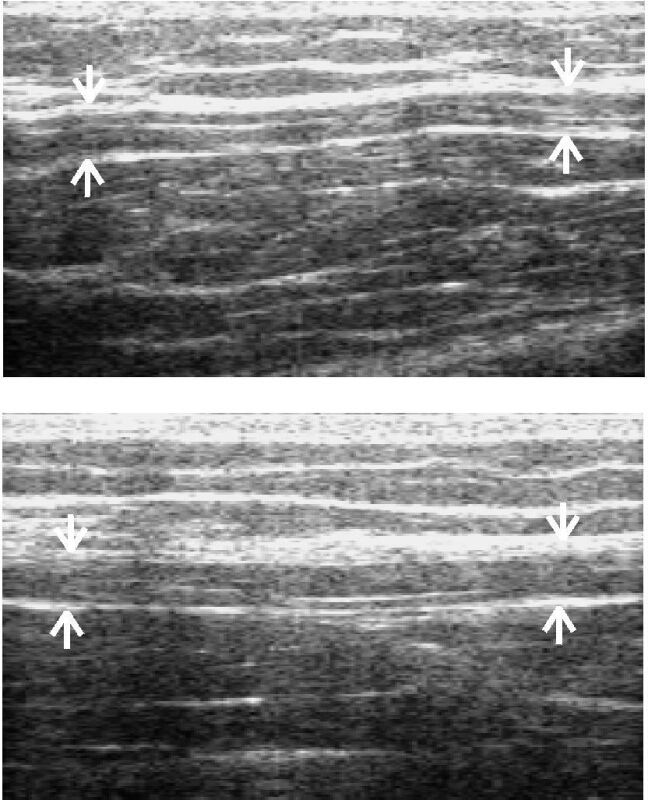Peripheral nerves slide and stretch in order to accommodate changes in nerve bed length that occur during joint movements. It has been suggested that peripheral nerves can become slack in joint positions that reduce their bed length (Sunderland, 1978). This has been demonstrated in vivo for the median nerve (Dilley et al., 2003). The present study uses an in vivo method to examine sliding and straightening of the ulnar nerve in response to upper limb movements. High frequency ultrasound images were used to measure nerve trunk bowing in the upper arm in a series of positions from the arm by the side with the elbow and wrist straight to full elbow flexion, 90° shoulder abduction and wrist extension, a position designed to stretch the ulnar nerve. Ulnar nerve sliding was measured in the forearm and upper arm during single joint movements using frame-by-frame analysis of image sequences (Dilley et al., 2003). During 40° wrist extension (limb position = 90° shoulder abduction and elbow straight) (n = 7 subjects) the ulnar nerve moved distally by 1.1 ± 0.4 mm (mean ± S.E.M.) in the proximal forearm and by 2.0 ± 0.4 mm in the distal forearm. Neither reducing nor increasing the bed length by altering arm position (arm by side and 90° elbow flexion respectively) affected the amount of nerve excursion during wrist extension (n = 4). Nerve movement in the forearm during 90° elbow flexion averaged only 0.7 ± 0.2 mm (n = 4) and in the upper arm 0.2 ± 0.1 mm (n = 1) despite a large increase in ulnar nerve bed length. Shoulder abduction produced 0.3 ± 0.3 mm of nerve movement in the proximal forearm (n = 2), whereas a similar limb movement for the median nerve produced 3.4mm (Dilley et al., 2003). Images of the ulnar nerve showed considerable curvature when the elbow was straight with the arm by the side, and when the elbow was flexed the nerve straightened (fig 1). Across the 26mm image the length of nerve changed by an average of 0.27 ± 0.05 mm (n=4 subjects), accounting for a 1% length change. These findings are consistent with observations on cadavers using MRI (Patel et al., 1998). In summary, it would seem that the ulnar nerve, like the median, accommodates much of the change in bed length during joint movements by straightening rather than stretching. All procedures accord with current local guidelines and the Declaration of Helsinki.
King's College London (2005) J Physiol 565P, PC21
Communications: Sliding and straightening of the ulnar nerve during limb movements studied in vivo in man using ultrasound imaging
Lynn, Bruce ; Summerhayes, Catherine ; Dilley, Andrew ;
1. Physiology, University College London, London, United Kingdom.
View other abstracts by:
Figure 1. (upper) Nerve trunk bowing with arm by side and (lower) straightening with combined elbow flexion shoulder abduction and wrist extension a position designed to tension the ulnar nerve.
Where applicable, experiments conform with Society ethical requirements.

